When in Tuscany, make a point to go to a town you’ve never heard of, and see works by an artist you’ve never heard of. Here, far from the tourist crowds, hidden gems demonstrate that the art world of 1400s and 1500s Tuscany boasted a world-class lineup of artistic geniuses. Even Tuscany’s “also-rans” would be a big deal just about anywhere else.
Sure, you want to see the biggies, too. Florence — the cradle of the Renaissance — has some of the greatest artistic sights in the world: The Uffizi Gallery shows off the most sumptuous collection anywhere of Renaissance greats, from Botticelli and da Vinci to Raphael and Caravaggio. The Accademia Gallery is home to Michelangelo’s David — probably the most recognizable statue on earth. The Borghese Gallery is loaded with even more stunning sculptures, including masterpieces by Donatello, Michelangelo, Verrocchio, and Brunelleschi. And that’s just for starters.
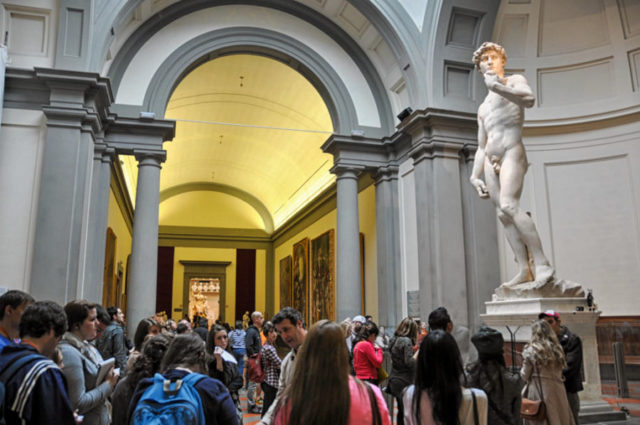
But — without taking anything away from Florence — many of my favorite works of Tuscan art are far from the big cities and famous museums. These memorable masterpieces are tucked away in smaller, less-visited towns or remote countryside outposts.
On my recent trip, I took a day off from my guidebook-updating work in Arezzo, a provincial capital of about 100,000 people. I went to Arezzo specifically because it isn’t particularly famous, or particularly jammed with great museums. It’s just a great place to settle in, relax, eat, enjoy…and stop taking notes for a day. If it’s known for anything, Arezzo is famous for its weekend antiques market, which happened to be going on during my visit.

In the center of Arezzo is the rough-brick facade of the Basilica of San Francesco. Inside, the apse is lovingly frescoed with tales of the True Cross, created in the 1450s and 1460s by Piero della Francesca. These illustrations take the viewer on the epic journey of the very cross that, it’s believed, Jesus was crucified upon.
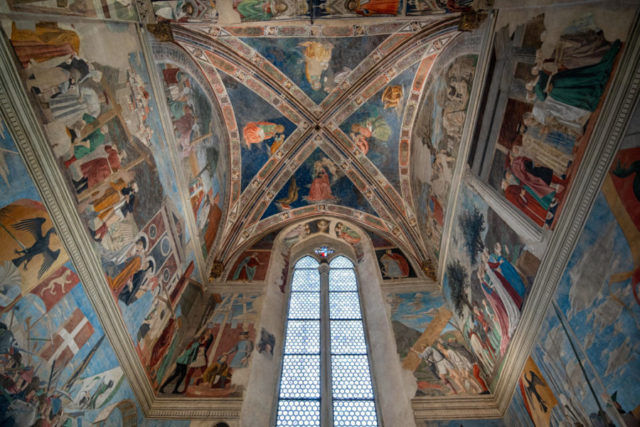
The narrative twists and turns through history — from Adam (yes, the Adam, of Adam and Eve fame) to the Queen of Sheba to Emperor Constantine’s mother Helena — while illustrating in starkly human terms the people who took part in the journey of the cross. In these scenes, della Francesca demonstrates his expertise in composition and perspective while also imbuing his figures with a graceful humanity — all of which was still relatively new to the art world, 50 years before Michelangelo or da Vinci.
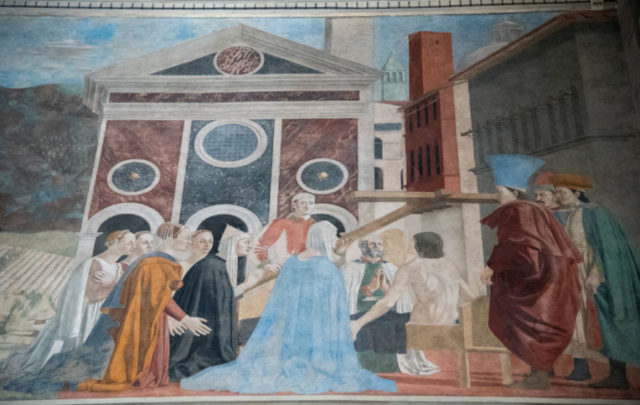
Della Francesca barely rates “honorable mention” status in the panoply of astonishingly talented Renaissance artists from this part of Italy. If the Tuscan Renaissance Artists were a baseball team, della Francesca would spend most games in the dugout…maybe seeing a little action when Vasari or Fra Angelico needed a day off. And yet, those True Cross frescoes in Arezzo are a remarkable masterpiece that — if someone important had taken notice at a certain moment in history — might very well be on the globe’s bucket list today.
About an hour’s drive away are works by a guy who never even came close to making the cut: Il Sodoma. Deep in the Crete Senese — the clay hills that ripple across a desolate, sparsely populated terrain south of Siena — the abbey of Monte Oliveto Maggiore perches on a wooded hillside. Here, an order of Olivetan monks live far from modern society, keeping watch over the precious artwork that fills their home.
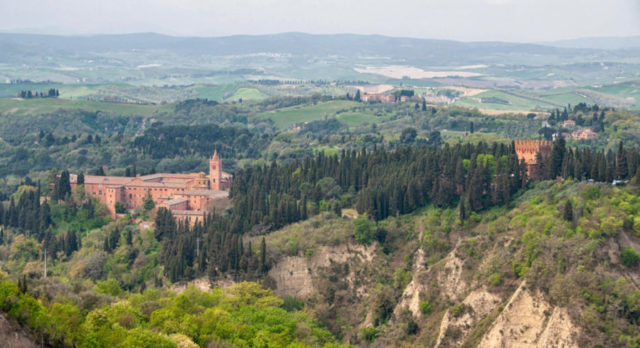
In 1497, the abbot commissioned the fresco artist Luca Signorelli to illustrate the cloister’s corridors with scenes from the life of St. Benedict. But Signorelli bailed out early — when he was only about a third finished — to take an even more plum gig down the road in Orvieto. His replacement was a highly irreverent and brutish painter named Giovanni Antonio Bazzi. The monks nicknamed him “The Madman” (Il Mattaccio), but history knows him as Il Sodoma. This nickname — “The Sodomite” — may have been a reference to his sexuality, or it may simply have been an insult applied by his mystified contemporaries…who didn’t know what to make of his bizarre behavior. Here he is in a self-portrait with, of course, two pet badgers:
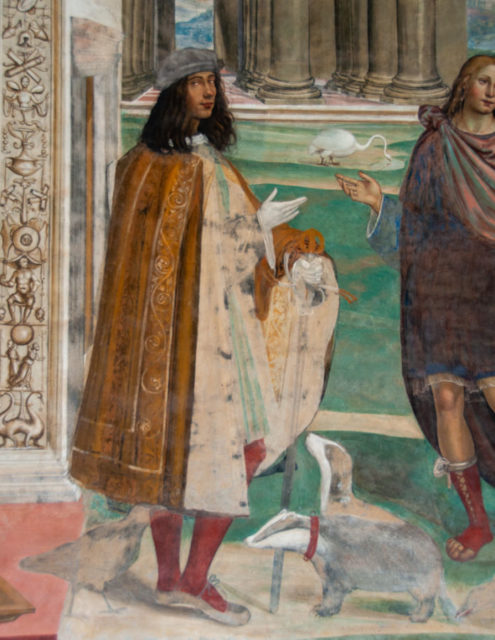
Il Sodoma completed the work Signorelli had begun. The result is a series of 35 frescoes illustrating the life of St. Benedict. It would be easy for an impatient tourist to roll their eyes through these hallways, jaded and unimpressed. But a great guide brings the story of St. Benedict — and of the stories of the two dueling artists who decorated this space — to life.
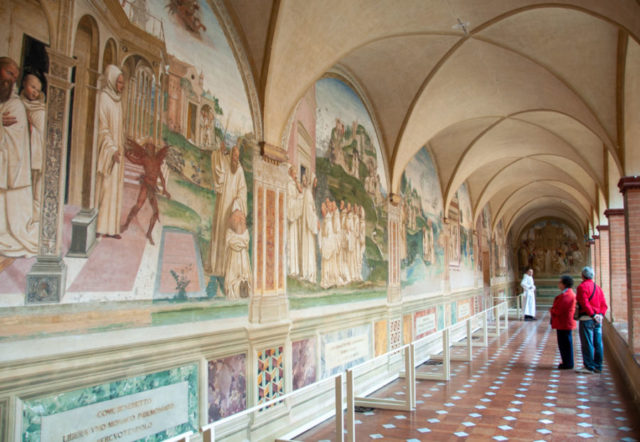
Roberto Bechi— one of our favorite guides in Tuscany (who also helped us design our new Best of Tuscany Tour) — led me through the abbey’s frescoes. And it simply blew my mind. Roberto focused my attention on delightful little details, including hidden portraits of some of Il Sodoma’s contemporaries: Leonardo, Michelangelo, Raphael, and Lorenzo the Magnificent.
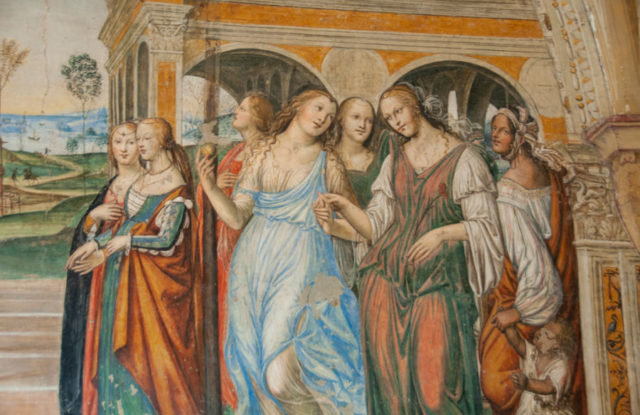
He also clued me into details that spoke to the huge personalities of the artists. Il Sodoma grew tired of hearing about how masterful Signorelli’s 3-D illusion table was — so he topped it with an even more striking one of his own. Different items on the table snap into focus depending on the angle and distance you’re viewing from.
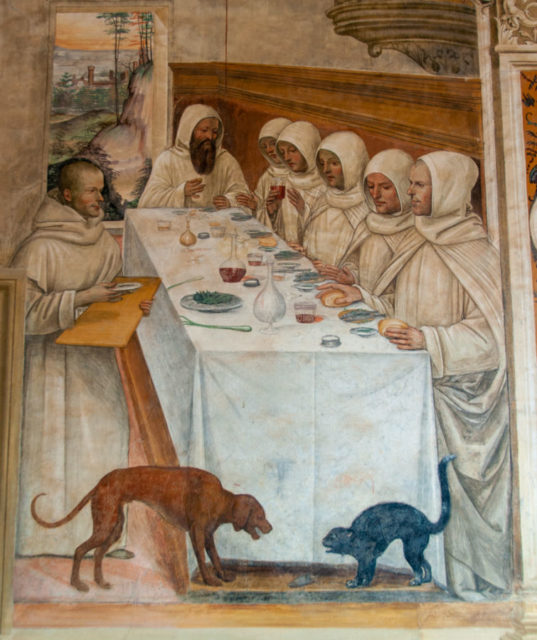
Il Sodoma clashed with the abbot — who, already well behind schedule and over budget, prodded him to work ever faster. This conflict came through in the artist’s work. In one panel, two donkeys share six legs — an intentional error. (A snarky Il Sodoma wrote in his journal: “Working too fast causes mistakes.”) In another scene, Il Sodoma painted a horse’s rear end, and above it, the window of a house where a shirt hangs in the breeze. During this era, a typical person owned seven shirts: six for workdays, and a seventh for Sunday, when they could rest (and do laundry). With this detail, Sodoma is saying to the abbot: “You made me work on Sunday — made me sweat through my seventh shirt. You horse’s ass!” Cheeky. Take that, Michelangelo.
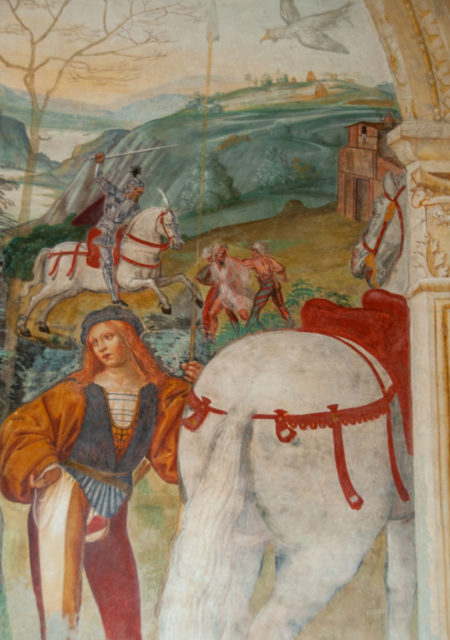
If you haven’t heard of Monte Oliveto Maggiore or Il Sodoma, you’re not alone. They are but a blip on the radar of the mainstream art world. But the longer you spend in Tuscany, and the deeper you dig, the more you realize that the top museums in Florence and Siena barely scratch the surface of the artistic bounty here. Seek out some of these hidden masterpieces, and make a point to linger over them. Come for the art…but stick around for the huge personalities.
Heading to Tuscany? I share a dozen of my favorite Tuscan experiences here.
Our new Best of Tuscany in 12 Days Tour — which begins in 2020 — incorporates many vivid experiences in Italy’s heartland…including a guided tour of Il Sodoma’s frescoes at Monte Oliveto Maggiore.
Or, to do it on your own, you’ll find all of the details you need in our Rick Steves Florence & Tuscany guidebook.
Do you have similar insights for the Umbria region? We will spend a week near Gubbio in October and would like to get your wonderful insights.
A lot of my “Tuscany” advice applies equally to Umbria. For example, one of my all-time favorite “forgotten church masterpieces” is the Luca Signorelli-frescoed chapel in Orvieto’s cathedral. And of course, we cover Orvieto and Assisi (both in Umbria) in our Rick Steves Italy guidebook, with plenty of in-depth insights…in fact, I just updated those two chapters on this Tuscany trip, too. Happy travels!
You MUST tour the hill town of Gubbio! It is a fantastic place where the TV show Don Matteo was filmed. Great places to eat and shop, friendly people, and a great basket ride to the top of Mt. Ingino and the beautiful Basilica Sant’Ubaldo.
Fascinating article! I hope to travel to Tuscany one day soon and stumble in to a countryside church to find overlooked art. By the way, the link just above to “a dozen favorite Tuscan experiences” isn’t working.
Thanks for pointing it out–it’s fixed now. Happy travels!